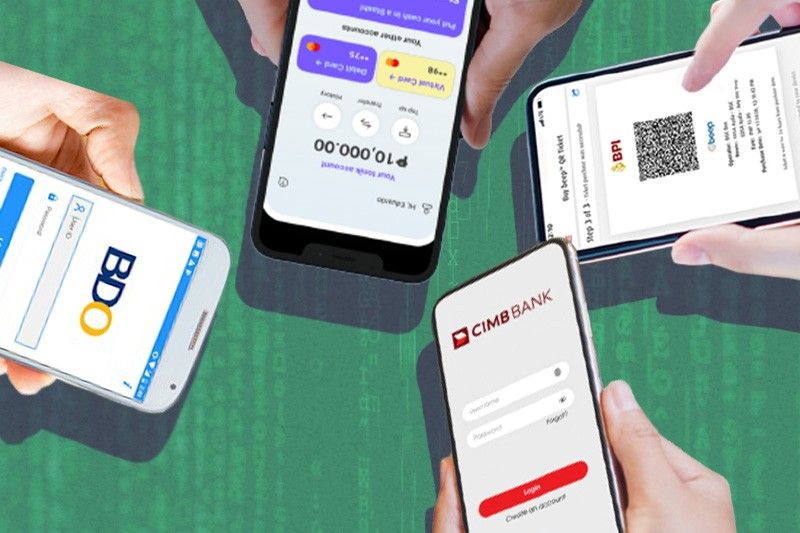Digital banks have no bank branches. How secure are they?

Digital banking has gained traction since the coronavirus pandemic began. With the new normal, people are now using digital banks instead of withdrawing and paying with cash in brick and mortar establishments.
Mark Bantigue, the digital channels head of BDO, discussed this concern at the 2021 Financial Literacy Summit hosted by The Global Filipino Investors.
For starters, digital banking is a service offered by various financial service companies. Bantigue said these can be traditional banks, financial technology companies and digital-only banks.
- Traditional banks are those like BDO, MetroBank, BPI and Landbank that have been around for many years but they didn’t previously have digital banking services.
- Fintechs are companies such as startup Mynt behind GCash, which provides a micropayment service that turns one’s mobile phone into what we call now as a virtual wallet or e-wallet. The goal is to deliver fast and convenient money transfers.
- Digital-only banks, meanwhile, are those like CIMB Philppines, ING Philippines and Tonik, which do not have physical offices or branches. Everything from setting up an account to withdrawing money is done online.
But digital banking is also offered by technology companies including Apple, which now offers ApplePay, or Google with its GooglePay. So the definition of digital banking is broad.
Generally, though, digital banking could entail a “wallet” and/or a “vault.” E-wallets are for paying for things and for money exchange purposes, while e-vaults are where people manage their funds and grow their assets, Bantigue explained.
Since digital banks are so popular, can we really trust them with our money?
The safety of your money in a digital bank is a two-way relationship, Bantigue said. Digital banking platform providers offer certain protections but a user also has to do her share to fulfill its protection promises.
What do financial service providers offer?
Platform security. This entails technology that has security layers to help deliver secure financial services. Platform security includes the unique username and password, one-time pin codes, and biometrics such as fingerprints facial recognition and voice recognition.
Bantigue advises digital bank users to avoid writing down their emails and passwords in sticky notes or anywhere that anyone can have access to.
Instead, users can enable biometrics technology such as face or fingerprint scanning that digital bank apps offer to help ensure their money’s safety.
He also recommends using two- or multi-factor authentication to better secure one’s accounts and funds.
What are your responsibilities?
Beware of phishing and social engineering, which are used by hackers. This can happen when you try to access your account outside the designated app or official website of your bank. There can be mock pages that imitate a bank and designed to grab your passwords.
Don’t lose your phone. But since this cannot be completely avoided, use cloud password storage. There are various password managers, which are encrypted and protected from hackers. These apps have prompts such as requiring one to change her password every 90 days.
Bantigue advises people to change passwords every now and then so that malicious actors won’t easily hack digital bank accounts.
And don't forget: Spread the risk!
Don’t keep all your eggs in one basket, so the adage goes. Diversify where you store your savings and other assets so that if an untoward incident affects one bank or platform, you still have money you keep elsewhere. One way of spreading the risk, Bantigue said, is through the Philippine Deposit Insurance Corp. or PDIC.
Bantigue advises to keep only the PDIC’s standard insured amount, which is P500,000.00, in one bank. This means that if anything happens to your funds in a digital bank, the PDIC has the responsibility to give you back up to P500,000. Because of this limit, it’s best to open several accounts to secure all of one’s funds.
To spread the risk, don’t just keep all your money in one bank. You may use Fintech apps if you have more than P1 million in extra funds,
You may also store your money in digital investing apps such as brokerage platforms, which is a way of diversifying your portfolio and growing your net worth at the same time.
--
Remember that digital banking was introduced to the Philippines with the main goal of improving financial inclusion across the country. It’s now very simple to open up bank accounts through digital platforms and Filipinos are encouraged to take advantage of them. After all, who doesn’t want to be financially literate and financially stable?



















